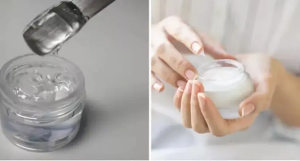Silicone compounds were known as early as the 1860s, and it wasn’t until Dr. Eugene RoChow innovated this important class of compounds in the 1940s that it became commercially available. after the 1950s, silicones began to occupy an important place in daily cosmetics after the introduction of the first silicone-containing products by the U.S.-based Dow Corning Company, and today silicones containing Organosilicone-containing skin care, hair care, shampoo and color cosmetics products have been recognized, while more and more silicone compounds have been more widely used in the formulation of personal care products.
With the continuous improvement of people’s living standards, the consumption of silicone in the field of beauty and personal care will certainly get faster growth.
Skin Care and Makeup Products
Volatile silicone oils (DC345), low to medium viscosity silicone oils, specialty silicone oils (cosmetic grade silicone oils, high refractive index silicone oils, alcohol ether silicone oils, silicone acrylates, aerosolized particles), silicone emulsifiers, silicone silicone oil mixtures, silicone volatile silicone oil mixtures, silicone dimethicone oil mixtures, alkyl-modified silicone waxes, silicone emulsions, silicone elastomers, and blends of silicone oils and vegetable oils.
Hair Cleansing Products
High-viscosity dimethicone oil, aminosilicone oil, aminosilicone emulsion, dimethicone oil emulsion, silicone elastomer emulsion, and so on.
Hair Care & Styling Products
Silicone oils, including volatile silicone oils, low to medium viscosity silicone oils, high viscosity silicone oil mixtures, aminosilicone oils, specialty silicone oils, silicone volatile silicone oil mixtures, silicone dimethicone oil mixtures, aminosilicone emulsions, dimethicone emulsions, silicone elastomeric emulsions, and others.

What is the role of silicone in cosmetics?
This is because silicones are inert, meaning that they are chemically inactive. In cosmetics, silicone ingredients serve different functions, acting as emulsifiers to help bind other substances, as emollients to soften or smooth the surface of the skin; or as surfactants to make the product spread better and more evenly when used; they can also help to control the consistency of cosmetic formulations, which is good for retaining moisture, or to reduce static electricity, for example to avoid frizzing in hair care products.
Do silicones suffocate the skin?
Most silicones are not permeable to liquid water, but they do allow the passage of oxygen, nitrogen and water vapor. In other words, silicone-containing products can “breathe” when applied to the skin. Some silicone products are used to reduce transdermal water loss (TEWL), which is one of the main causes of dryness and dehydration. This is why silicone products are used in wound, scar regeneration, and even burn creams, which are designed to form a protective barrier on the surface of the skin when applied to prevent transepidermal water loss. Retaining moisture in damaged skin further reduces the risk of infection and skin irritation.
Silicone products create an ideal atmosphere of moisture and oxygen to transform the skin and promote collagen formation, as well as regenerate cells throughout the epidermis. In addition, silicones can reduce redness, itching or pain in the skin, soften scar tissue, flatten scarring and prevent abnormal scarring from forming.

